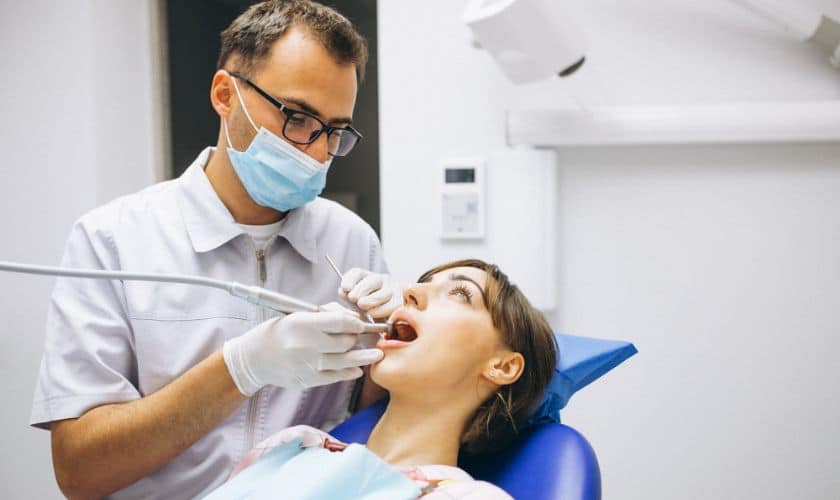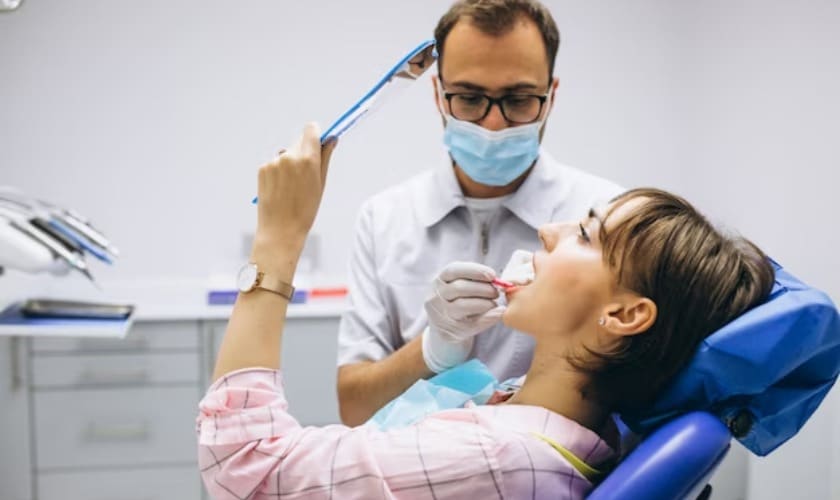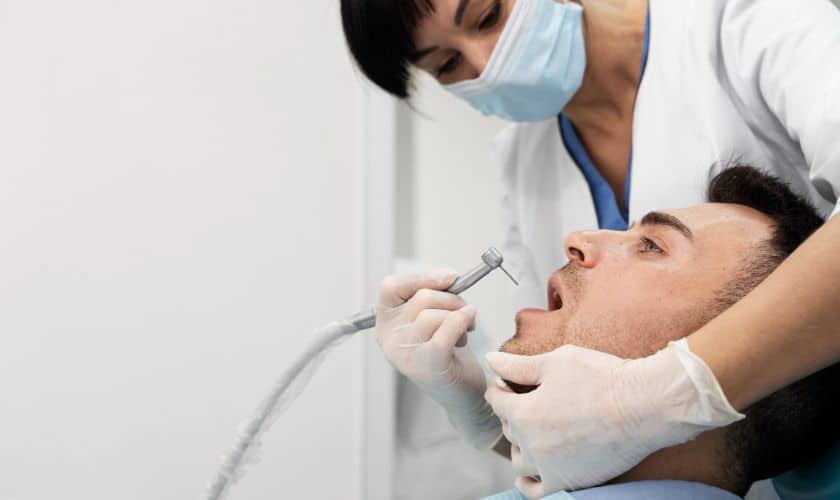
Sedation dentistry, often shrouded in misconceptions, emerges as a realm of transformative dental care. In this introduction, we embark on a journey to debunk prevalent myths surrounding sedation dentistry, shedding light on its true nature, benefits, and safety. By unraveling the misconceptions and separating fact from fiction, we empower individuals to make informed decisions about their dental experiences. Whether it’s overcoming anxiety or undergoing complex procedures, understanding the reality of sedation dentistry opens doors to a more comfortable, efficient, and stress-free approach to oral health, dispelling uncertainties and paving the way for confident smiles.
Understanding Sedation Dentistry
Sedation dentistry encompasses various levels of relaxation, from minimal to deep sedation, administered to alleviate anxiety and discomfort during dental procedures. Tailored to individual needs, it promotes a stress-free experience while allowing patients to remain conscious and responsive. Nitrous oxide, oral sedatives, and intravenous sedation are common methods used, enhancing patient comfort and cooperation. The aim is to create a relaxed environment that enables dentists to perform treatments efficiently and patients to undergo procedures without anxiety, ultimately fostering a positive and transformative dental journey.
Myth 1: Sedation Dentistry is Only for Complex Procedures
Dispelling misconceptions about the scope of sedation dentistry and its applicability.
1. Beyond Complex Procedures:
– Sedation is not limited to intricate surgeries; it’s beneficial for various treatments, including routine cleanings and fillings.
– It offers comfort for individuals with dental anxiety, enhancing overall dental experiences.
2. Enhancing Comfort for Routine Care:
– Sedation dentistry can help patients with dental phobia maintain regular check-ups, promoting preventive care.
– Patients can receive necessary treatments without fear or stress, improving oral health and overall well-being.
Myth 2: Sedation Dentistry is Unsafe
Addressing concerns and clarifying the safety of sedation dentistry.
1. Stringent Safety Protocols:
– Sedation dentistry follows strict guidelines and protocols to ensure patient safety.
– Qualified professionals monitor patients throughout procedures, minimizing risks.
2. Tailored to Individual Needs:
– Sedation levels are adjusted based on a patient’s medical history, ensuring personalized and safe administration.
– Modern advancements and medical expertise contribute to the overall safety and effectiveness of sedation dentistry.
Myth 3: Sedation Dentistry Puts You Completely Unconscious
Clarifying the misconception about sedation dentistry and its effects on consciousness.
1. Different Sedation Levels:
– Sedation dentistry offers various levels of relaxation, allowing patients to remain conscious and responsive.
– Conscious sedation induces a deep state of relaxation while ensuring patients can communicate and follow instructions.
2. Balancing Comfort and Awareness:
– Sedation aims to alleviate anxiety and discomfort while maintaining patient cooperation.
– Patients can still respond to cues and communicate with the dentist, contributing to a safe and controlled dental experience.
Myth 4: Sedation Dentistry is Only for Dental Phobia
Expanding the understanding of sedation dentistry beyond dental phobia.
1. Addressing a Range of Concerns:
– Sedation is not exclusive to dental phobia; it benefits patients with anxiety, gag reflex issues, and medical conditions.
– Individuals with special needs or a history of traumatic experiences can also benefit from sedation.
2. Enhancing Patient Comfort:
– Sedation promotes relaxation, making dental visits more comfortable for a diverse range of patients.
– It fosters a positive dental environment and empowers individuals to prioritize their oral health without undue stress.
Myth 5: Sedation Dentistry is Expensive
Exploring the cost considerations and potential benefits of sedation dentistry.
1. Comparing Costs to Benefits:
– While sedation may incur additional costs, its advantages, such as reduced anxiety and efficient procedures, can outweigh expenses.
– Avoiding delays due to fear or discomfort can lead to better oral health and potentially long-term savings.
2. Efficiency and Stress Reduction:
– Sedation can expedite complex treatments, potentially requiring fewer appointments.
– The reduction in stress and improved patient experience may justify the investment in sedation for a more relaxed and productive dental journey.
Fact 1: Sedation Dentistry Requires No Specialized Training for Dentists
Clarifying the qualifications and training required for dentists in sedation dentistry.
1. Additional Training and Certification:
– Dentists offering sedation dentistry must undergo specialized training and obtain proper certifications.
– Rigorous educational programs ensure dentists are proficient in administering sedation safely and effectively.
2. Ensuring Patient Safety and Expertise:
– Proper training equips dentists to handle various sedation levels and potential complications.
– Patients can have confidence in the expertise of dentists trained in sedation techniques, ensuring a secure and comfortable dental experience.
Fact 2: Sedation Dentistry Can Be a Game-Changer for Dental Care
Exploring the transformative impact of sedation dentistry on oral health experiences.
1. Overcoming Barriers to Dental Care:
– Sedation dentistry enables individuals to address dental concerns they might otherwise avoid due to fear or anxiety.
– Patients can undergo necessary treatments without hesitation, fostering better oral health outcomes.
2. Enhancing Comfort and Efficiency:
– Sedation reduces discomfort, allowing dentists to perform procedures more efficiently and precisely.
– Patients can achieve multiple treatments in a single session, streamlining their dental care journey and minimizing stress.
Some FAQs include:
Certainly, here are five frequently asked questions (FAQs) about sedation dentistry:
1. Is sedation dentistry safe?
Yes, when administered by qualified professionals, sedation dentistry is safe. Dentists undergo specialized training to ensure patient well-being.
2. Will I be completely unconscious during sedation?
No, most sedation methods allow you to remain conscious and responsive while experiencing deep relaxation.
3. Can I drive myself home after a sedation appointment?
Depending on the type of sedation used, you may need someone to drive you home after the procedure.
4. Is sedation dentistry only for complex procedures?
No, sedation can be used for various treatments, from routine cleanings to more extensive procedures, depending on patient needs.
5. Is sedation dentistry covered by insurance?
In some cases, sedation dentistry may be covered by insurance, especially for certain procedures or patients with specific needs. It’s best to check with your provider.
In unraveling the myths surrounding sedation dentistry, a clearer picture emerges of its safety, versatility, and transformative potential. By dispelling misconceptions, individuals can approach dental care with confidence, knowing that sedation dentistry offers a path to comfort, efficiency, and improved oral health. Embracing accurate information empowers us to make informed decisions, opening doors to dental experiences that prioritize well-being and foster brighter smiles.




